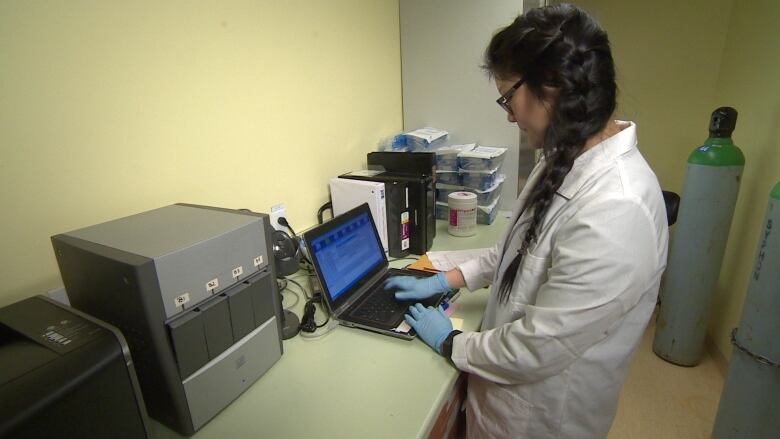Why some COVID-19 tests return false positives
Cross-contamination in labs is the most likely culprit

When health officials in Nunavut confirmed the territory's first case of COVID-19 in Pond Inlet, the novel coronavirus crossed its final frontier in Canada every province and territory could record a case of the disease.
But just a few days later, the territory's chief public health officer, Dr. Michael Patterson, had to eat his words. The result "was re-tested, and deemed a false positive," according to a news release andthe territory returned to zero confirmed cases.
That's good news for Nunavut, but bad news for those pushing for widespread COVID-19 testing, who now face more skepticism from the public over a high-profile error.
Health officials already warn of the possible consequences of "false negatives" eight to 10 per cent of tests which fail to detect COVID-19, mostly due to improper swabbing at the point of care.
False positives, like the case in Pond Inlet, are much, much rarer less than one per cent of tests overall,estimates Dr. Philippe Lagac-Wiens who's a medical microbiologist at St. Boniface Hospital in Winnipeg and an associate professor at the University of Manitoba. Studiesand FDA filings show repeated testing in controlled environments rarely if ever produces them.
But with such a high volume of tests being processed each day, false positives "are an issue that every jurisdiction has dealt with," in the words of Dr. Patterson.
These are very rare events.- Dr. Philippe Lagac-Wiens
In just the last month, false positives at long-term care facilities in Kingston, Lindsay, and hard-hit Bobcaygeon, Ont., put local authorities on high alert, only to be ruled out as errors later on.
How false positives occur
Lagac-Wiens says four false positives have been recorded in Manitoba to date.
"It is in a way bad luck, and it's a fact of just the number of samples that we're having to process in these automated instruments," he said.
Across Canada, health workers use what's called "reverse-transcriptase polymerase chain reaction" (PCR) testing to confirm cases of COVID-19. In several places, they're also used to confirm when someone is recovered.
The tests evaluate a sample, taken with a swab of cells at the back of the nose and throat, for trace amounts of the coronavirus's RNA.
This can be done one at a time, as with the GeneXpert technology used to double-verify presumptive cases in Nunavut, or in lab-built robotic testing machines, which can process hundreds of tests at a time.
In lab-built machines, robotic instruments extract pieces of hundreds of different samples and feed them into a PCR test. That's where cross-contamination can happen.

"Every now and again, even though it's sort of a very precise robotic instrument there can be very slight traces of carryover from sample to sample," Lagac-Wiens explained. "That's where most of these false positives probably come from."
Lagac-Wiens said this most often happens when there is a very strong sample next to a negative one. The result is usually a very weak positive.
Sometimes there's a great deal of urgency to get these reports out, so the results will be sent out right away.- Dr. Philippe Lagac-Wiens
"If it's a very, very weak positive, that's usually your first hint that it merits rechecking. Another is that if a sample right beside it is strongly positive," he said.
"Usually, when labs see that, they'll go back to the original sample and they'll re-test it," he said.
Why they sometimes get reported as confirmed
That doesn't always happen, though.
In Nunavut's case, health officials had more or less completed contact tracing and testing in Pond Inlet before they suspected a false positive.
"Sometimes there's a great deal of urgency to get these reports out, so the results will be sent out right away," Lagac-Wiens explained.
That may have been the case in Nunavut, where tests have to spend several days in transit before they can be evaluated in the lab. That means it's all the more important to get results quickly to limit the potential for community spread.
Not misdiagnosing the common cold
Importantly, Lagac-Wiens said, the tests have all been rigorously evaluated to ensure they don't return false positives for other common respiratory infections, including several seasonal varieties of common cold. That's unlikely to be the culprit here.
"The main message," Lagac-Wiens said, "is these are very rare events."
"They get a lot of attention when they do happen, but if you look at the total number of positives and see how many of them are actually false positives, it's usually less than one per cent."












_(720p).jpg)


 OFFICIAL HD MUSIC VIDEO.jpg)
.jpg)



























































































